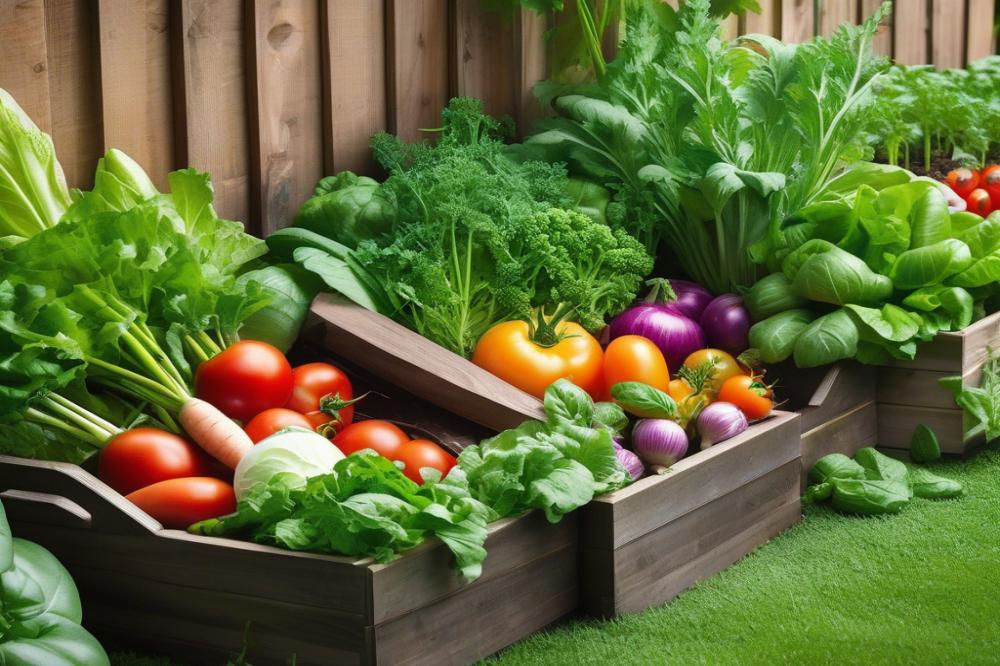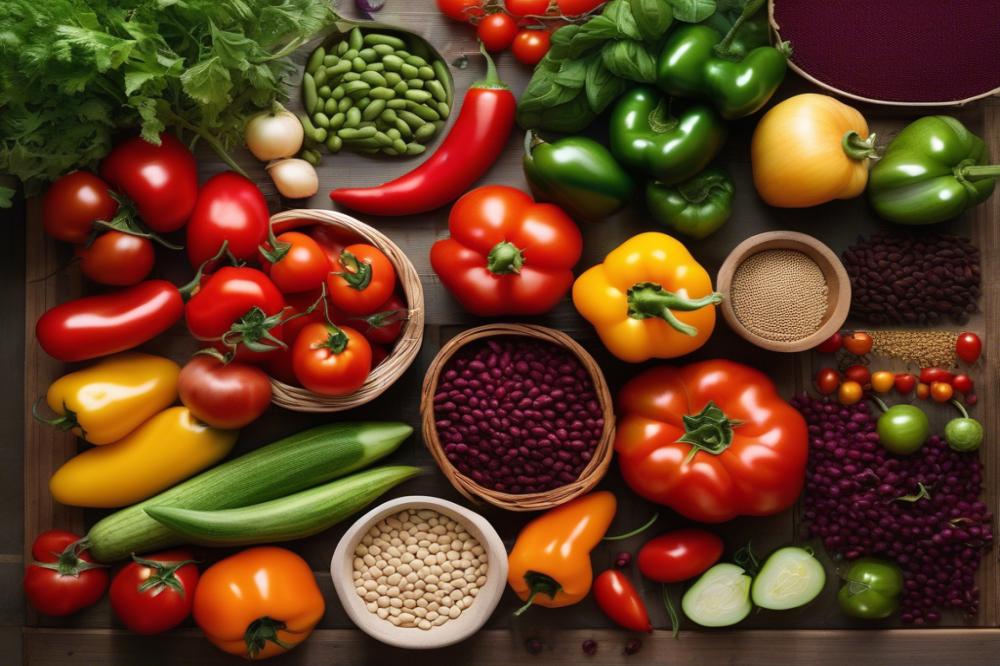Introduction
gardenbix.com/the-secrets-to-growing-soybeans-in-your-home-garden“>purple beans have become a favorite among gardeners looking to add a splash of color to their plots. These vibrant legumes stand out not only for their striking hue but also for their unique characteristics. In recent years, more people have turned to colorful plants in vegetable gardening, as they bring visual appeal while providing essential nutrients. Heirloom beans, like those with a rich purple color, capture attention and add an aesthetic dimension to gardens.
Incorporating various shades and forms of vegetables can enhance the overall beauty of any garden. Many gardeners are discovering that nutritious vegetables can be just as pleasing to the eye as they are to the palate. When planting purple beans, you’re not only growing beans; you’re also contributing to a tapestry of colors that can enliven any outdoor space. An inviting garden can encourage family and friends to gather and share in the rewards of organic gardening.
Beyond their visual appeal, purple beans boast several health benefits. Packed with vitamins and minerals, these legumes offer a nutritious addition to your meals. The distinctive color indicates a wealth of antioxidants, which are important for overall health. Understanding the benefits of these beans can motivate more individuals to consider them in their gardening tips and vegetable selection.
Understanding Purple Beans


When it comes to growing colorful plants, various types of purple beans stand out in any vegetable gardening space. These beans not only add vibrancy to the garden but also bring a range of flavors and textures. Some popular varieties include the Purple Royalty bean, which is known for its rich color and smooth texture, and the Violet Podded Pole bean, which is both beautiful and flavorful. Each type has its specific growing requirements and culinary uses, making them fascinating choices for gardeners.
Gardening offers two main types of growth habits for beans: pole beans and bush beans. Pole beans require support, as they climb up trellises or poles. This climbing habit saves space in the garden and can lead to greater yields. On the other hand, bush beans grow low to the ground and are easier to harvest. They mature more quickly but may require slightly more spacing. Choosing between these two depends on your gardening layout and personal preference.
Heirloom beans play an important role in the world of organic gardening. These beans are varieties that have been passed down through generations. Their preservation is crucial, as they often possess unique flavors and characteristics. Many gardeners appreciate heirloom beans for their adaptability and resilience to local growing conditions. By planting purple beans, you can contribute to maintaining biodiversity while enjoying nutritious vegetables that are often superior in taste compared to modern hybrids.
Preparing Your Garden for Purple Beans


Choosing the Right Location and Soil Conditions
Finding the perfect spot for planting is essential. A sunny location promotes healthy growth. Beans thrive in well-drained soil. Look for areas with good air circulation. This helps prevent diseases that can affect these colorful plants. A pH level between 6.0 and 7.0 is ideal. Conducting a soil test can provide valuable insights. Knowing your soil composition will help you make better gardening choices.
Importance of Organic Gardening Methods
Organic gardening methods support a healthy ecosystem. Many gardeners prefer using organic techniques. These methods not only benefit the plants but also the soil and local wildlife. Avoiding synthetic fertilizers and pesticides promotes a safe environment. Growing heirloom beans can particularly add to this approach. Organic gardening leads to healthier, tastier vegetables that are free from harmful chemicals.
Tips for Soil Amendment and Preparation
Preparing the soil is a crucial step. Start by adding organic matter, such as compost. This enriches the soil and provides essential nutrients. If the soil is heavy or clay-like, consider incorporating sand for better drainage. Tilling the soil helps mix in amendments evenly. Aim to break up any large clumps. Afterward, let the soil rest for a few days before planting. Good drainage is vital, especially for bush beans and pole beans. Following these gardening tips will give your plants the best chance to thrive.
Planting Purple Beans


Timing and Climate Considerations for Planting
Growing purple beans thrives in warm weather. Plant them after the last frost date in your area. A temperature range between 70°F to 90°F works best for these colorful plants. Regions with a longer growing season benefit most. Dry weather helps prevent diseases, while efficient watering keeps soil moist. Check your local climate conditions to pinpoint the right time. Beans do not like cold soil, so wait until it warms up.
Step-by-Step Guide for Planting
Begin by selecting a sunny spot in your garden. Ample sunlight promotes healthy growth. Next, prepare the soil by loosening it to about 12 inches deep. Work in compost or organic matter to enhance nutrient content. Sow seeds about an inch deep and spaced three inches apart. If using pole beans, provide support like a trellis or stakes. For bush beans, the area can be more compact. Cover the seeds with soil and gently press down. Water the area lightly to encourage germination, but avoid making it soggy. Keep an eye on them as they sprout, and thin out any crowded seedlings.
Companion Planting Ideas to Enhance Growth
Companion planting can maximize your garden’s potential. Consider pairing beans with corn. This creates a sturdy structure for beans to climb, while also utilizing space efficiently. Tomatoes also work well nearby, as they provide shade for beans during hotter weather. Avoid planting beans close to onions or garlic, as these can inhibit their growth. Marigolds deter pests, making them great friends in the garden as well. Peppers and cucumbers can also be beneficial partners. These combinations create a harmonious garden ecosystem that promotes productivity.
Caring for Your Purple Beans


Successful vegetable gardening requires careful attention to many details. Watering is crucial for healthy growth. Young plants need consistent moisture, especially during dry spells. A good rule is to provide about 1 inch of water per week. Rainwater can help, but sometimes additional watering is necessary. Use a soaker hose or drip irrigation to deliver water directly to the roots. This method minimizes water waste and keeps the foliage dry, which helps prevent disease. Fertilization is equally important. Using a balanced organic fertilizer can promote growth and enhance flavors. Apply it according to the label instructions, usually every four to six weeks during the growing season.
Pest Control and Disease Prevention
Many gardeners worry about pests. Common issues for beans include aphids, spider mites, and bean beetles. Regularly inspect your plants for signs of infestations. If you notice any problems, remove affected leaves. Insecticidal soap is effective against many pests. Disease prevention starts with good gardening practices. Crop rotation helps prevent soil-borne diseases. Select resistant heirloom beans for better protection. Maintain airflow around the plants by spacing them properly. This can help reduce the likelihood of fungal infections.
Support Structures for Pole Beans Versus Bush Beans
Providing support for pole beans is essential since they grow tall. Trellises, cages, or teepees work well for these colorful plants. Make sure the support structure is sturdy enough to hold weight. Attach the beans to the supports gently to guide them as they grow. In contrast, bush beans do not require this extra help. They grow shorter and can stand on their own. These plants need enough space to spread out. When planning your garden, consider your options and the space available. Each type of bean brings its own benefits to the table. Choosing the right variety gives you a fruitful and vibrant garden.
Harvesting and Enjoying Purple Beans
When and How to Harvest Purple Beans
Waiting for the right moment to pick your purple beans is crucial. Ideally, beans are ready to harvest when they reach 4 to 6 inches in length. Checking daily is helpful since beans can mature quickly. Snap them off the plant gently, taking care not to damage the stems. Observing the pods is important; they should feel firm and crisp. For those growing pole beans, use a step stool or support for easier access. Bush beans might require bending down a bit. Both types benefit from regular harvesting. Frequent collection encourages plants to produce even more.
Culinary Uses and Recipes
These colorful vegetables can add vibrancy to many dishes. Steam or sauté them lightly to preserve their bright hue. Tossing them into salads gives a delightful crunch. Stir-fries are another excellent option. Creating a simple vegetable medley can showcase them beautifully. Consider pairing purple beans with garlic and olive oil for a quick side dish. For a hearty meal, try adding them to soups or stews. Heirloom beans can also shine in casseroles. Don’t be afraid to experiment. The possibilities are endless when you’re cooking.
Nutritional Benefits
Including these nutritious vegetables in your diet has many advantages. They are low in calories while being high in fiber. Fiber helps with digestion and keeps you feeling full longer. Rich in vitamins A and C, they can boost your immune system. Antioxidants found in purple beans promote overall health. Introducing them into your meals can help create a more balanced diet. They’re a fantastic choice for anyone looking to eat healthier. Moreover, growing your own beans means you control what goes into your food. Organic gardening ensures that you avoid harmful chemicals. No doubt, these factors add to the appeal of vegetable gardening.
Final Thoughts on Growing Purple Beans
Growing purple beans brings numerous benefits to any home garden. These vibrant vegetables are not only nutritious but can also add a splash of color to your plots. Their eye-catching hue can make your garden more appealing and encourage you to experiment with colorful plants that delight the senses.
Consider integrating these beans into your garden plans for a unique twist on your regular vegetable choices. Not only do they provide essential vitamins and minerals, but their striking appearance can inspire conversations and creativity in meal preparation. Incorporating such elements can transform simple dishes into something exciting and visually appealing.
For a successful growing experience, pay attention to a few key details. Plant them where they receive plenty of sunlight, and maintain a consistent watering schedule. Healthy soil is crucial, so using organic compost can help boost growth. Additionally, consider companion planting to improve resilience against pests.
In summary, adding purple beans to your garden can be both a rewarding and enjoyable endeavor. Their vibrant color and tasty yields can enrich your culinary experiences. With these gardening tips, you’ll be well on your way to cultivating a flourishing and diverse vegetable garden. Happy planting!



